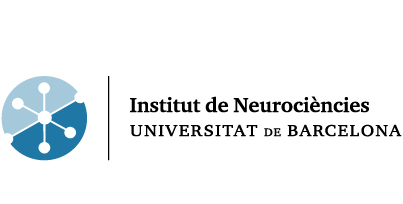VICTORIA DÍEZ CHAMIZO
Position: Full Professor
Research team
Antonio Álvarez Artigas
Associate Professor
talvarez (at) ub.edu
Joan Sansa Aguilar
Associate Professor
jsansa (at) ub.edu
Josep Batista Trobalon
Associate Professor
josep_batista_trobalon (at) ub.edu
Marta Natalia Torres Dominguez
Administrative and technical staff
martatorres (at) ub.edu
Itxaso Barberia Fernández
Early stage researcher
Contact details
Prof. Victoria Díez Chamizo
Department of Psicologia Bàsica
Faculty of Psychology, Pg. de la Vall d’Hebron 171
08035 Barcelona (Spain)
+34 933125151
victoria.diez.chamizo (at) ub.edu
Research Interests
In his classic 1981 (L&M, 12, 239-260) work about spatial localization by the rat, Morris claimed that his results provided support for O’Keefe and Nadel’s (1978, The hippocampus as a cognitive map. Oxford University Press) mapping theory (which assumes that spatial learning differs radically from standard conditioning) but no definite evidence that the processes underlying the formation of a map or its use in behaviour are distinct from those processes explored in traditional studies of associative learning. However he suggested that “systematic comparisons could be possible using procedures known to reveal phenomena characteristic of instrumental and/or classical conditioning, like latent inhibition and blocking” (p.259). To develop such systematic comparisons has been our main research interest for the past 25 years, mainly in collaboration with Professor N.J. Mackintosh. Complementary, the group is also interested in other themes, with non-spatial tasks, related with associative learning.
The main results of our work have been the demonstration that the basic phenomena of Pavlovian conditioning (like blocking, overshadowing, latent inhibition, perceptual learning …) also appear when working with strictly spatial tasks (both in the elevated maze and in the Morris water maze). Partly due to our results the influential proposal by O’Keefe and Nadel (1978) has been questioned. Their proposal claims that spatial learning is non-associative, different and independent from other forms of traditional learning, like classical and instrumental conditioning. At present we have adopted a comparative approach. Our main line of research still is to understand what are the processes underlying the acquisition and maintenance of spatial information, but both with non-human and with human participants (in this case by means of a virtual navigation task), in order to expand our theoretical analysis to other effects and phenomena. A second main challenge is to understand sex differences when dealing with spatial tasks.
Current Research Lines
- Basic Pavlovian and Instrumental Phenomena in the Spatial Domain
- Sex and Age Differences in the Spatial Domain
- Landmark learning and Geometry learning
- Cognitive Maps
- Perceptual learning
Highlighted publications
· Mesa, V., Osorio, A., Ballesta, S., Marimon, J.M. & Chamizo, V.D. (2017). Geometric vs. non-geometric information: Explaining male rats’ selective preferences in a navigation task. Learning and Motivation, 60, 23-33.
· J.B. Trobalon & V.D. Chamizo, Eds. (2016). Associative Learning and Cognition. Homage to Professor N. J. Mackintosh. “In Memoriam”(1935-2015). Edicions Universitat de Barcelona (Col.lecció Homenatges). Number of pages: 254.
· Chamizo, V.D., Rodríguez, C.A., Torres, I., Torres, M.N., & Mackintosh, N.J. (2014). What makes a landmark effective?: Sex differences in a navigation task. Learning and Behavior, 42, 348–356.
· Barbería, I, Baetu, I., Sansa, J., & Baker, A.G. (2014). When is a cause the “same”? Incoherent generalization across contexts.The Quarterly Journal of Experimental Psychology, 67, 281-303.
· Artigas, A.A., Contel, D.M., Sansa, J., & Prados, J. (2012). Salience modulation in serial pre-exposure. Implications for perceptual learning. Journal of Experimental Psychology: Animal Behavior Processes, 38, 66-73.



